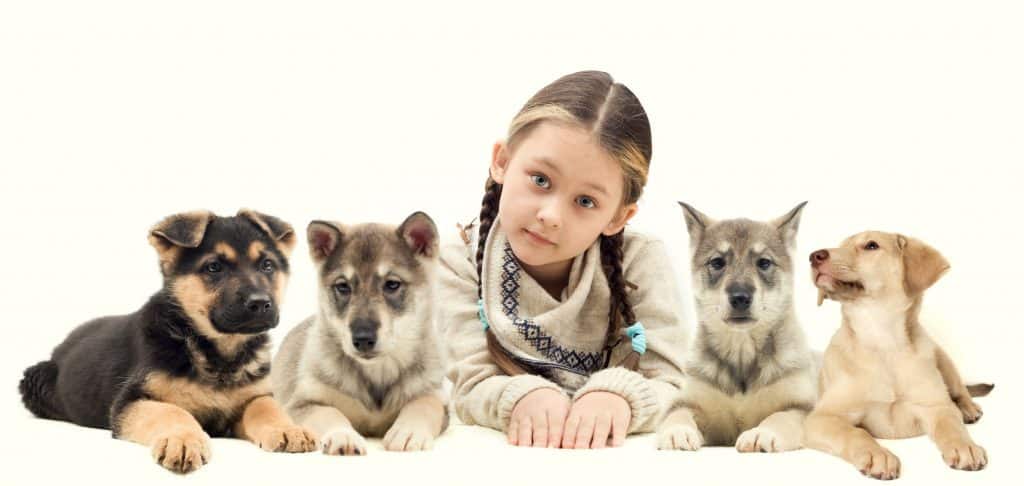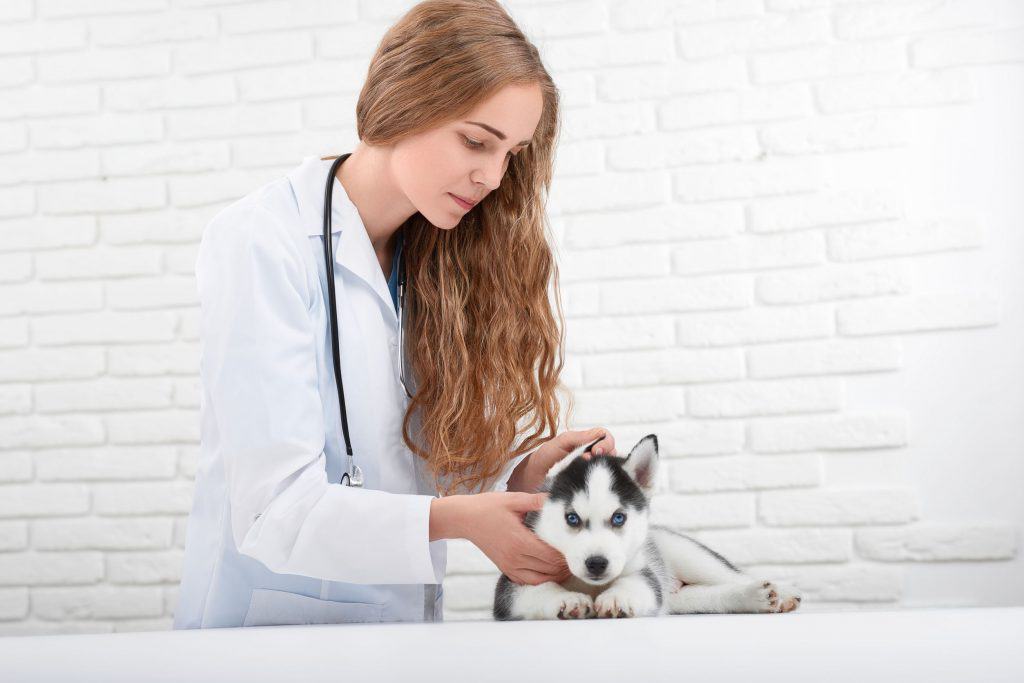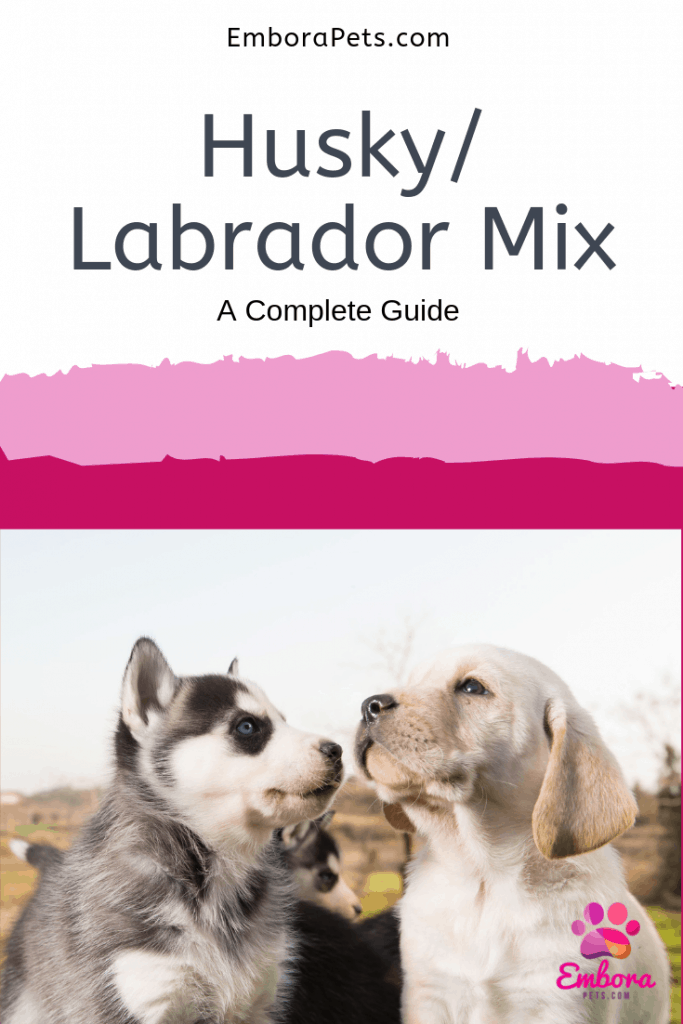Husky/Labrador Mixes: A Complete Guide With Pictures
It can be exciting to own a Husky/Labrador mix, but with that, you will need to have a complete guide on taking care of them. It can be difficult to figure out what to feed them, what their temperament is like, and other concerns. Here’s the complete guide to owning a Husky/Labrador mix.
There are many factors to think about when it comes to owning such a lovable animal. As an owner, you have the responsibility to care for this pup. Which means you will need to figure out if their temperament matches yours if their feeding schedule and health concerns are something you can handle.
Physical Appearance
Since this is a mix breed between two drastically looking dogs, you do
Though, since you can have some information on the parents and you known what they look like you can expect your future puppy to have some of the characteristics that are listed below:
Coat: Their coat can be silky, and short as well as double-layered. The colors also vary from white, black, brown, golden, or any combination of them in all honesty.
Size: The size of your pup can change but since they will most likely be medium sized you can expect them to be 40-60 pounds, and 25 inches tall.
Eyes: This can differ since puppies in the same litter can have different eye colors, but you can expect either blue, brown, or different colored eyes.
Temperament
Both breeds (Husky and Labrador) are known for their high amounts of energy. They are the perfect active buddy to have if you enjoy going on hikes!
As an owner of a mix breed you can expect a very energetic, affectionate pup. They are also quite social creatures! They enjoy playing with toys and mental stimulation helps keep them happy!
This mix breed will thrive in a family oriented home, and will also benefit from some obedience training at an early age.
Having them start on training at an early age will help them feel less anxiety since they will be capable of being adaptable, calm, and behaved in all environments!
Overall, this dog is a great family pet, or pet to have if you are single!
Training Husky/Labradors
This mix breed is known to be quick learners, but they can also be quite independent.
So, with that being said you can imagine your dog not enjoying the idea of you bossing them around.To make the training process easier, start them while they are young.
At the age of a puppy, they will be easy to train, and they’ll have more
Make sure to keep the sessions, in which you train them, short. Not only that, but pay attention to which toys they enjoy playing with the most.
Once you figure this out, you can include a few toys and treats to keep them focused and interested.
If your pup is known to be a bit stubborn prepare for some challenges. Stubborn mix breeds, especially a Husky/Retriever mix, need their owners to be willing to put in an immense amount of effort into training.
If you are a first-time dog owner, you could reconsider owning a mix breed at first. But, if you are up to the challenge, just know that this mix breed likes to test their owners.
They just want to see how strong your leadership skills, so do not become intimidated by them.
Just do your best to keep your focus and motivate them too!
Compatibility with Children

While these dogs are extremely friendly and kind, you should not leave your child with a medium to large sized dog alone.
That does not mean they can never play with those kinds of dogs. But you should always keep an eye on your child while they are playing with the dog.
A Husky/Retriever mix is affectionate toward children and if you give your pup the proper training they can be lovable balls of fur. Instead of a mischievous yet lovable ball of fur.
Another thing to be careful of when your child is playing with their dog is younger children tend to pull or tug on the pup’s ears.
Which can be a bit annoying for them.
Though, you can teach your children to simply not bother the dog while he is sleeping, eating, or being trained.
Health Issues Husky/Labrador Mixes Encounter
Your Husky/Labrador mix can come across any of the following when it comes to health. It all depends on the genes your dog got from their parents.
It is important to keep watch of their health regularly, and that can mean checkups at the vet to make sure everything is looking good.
Health risks for Labradors:
- Joint problems
- Bloat and Obesity
- Ear infections
- Heart disease
- Cancer
Sometimes the causes of these health conditions are:
- Inherited
- Environmental causes
- A combination of both
Joints
Labradors are born with well-constructed and physically proportional bodies. They are generally healthy and active dogs. But they can be seriously affected by two kinds of joint conditions.
- Hip dysplasia
- Elbow dysplasia
Both of these join conditions are mainly caused by genetics, but the exact gene that causes this problem has yet to be discovered.
Though your dog’s environment can also cause changes in the severity of the condition they are suffering from. In simplier terms, how you feed and exercise your dog can change how the condition effects them.
Overall, your dog will not have the best time if they are affected by either condition.
Obesity
This condition is the easiest to avoid. You can simply maintain how much food your dog eats, and how often they go outside for exercise.
It is extremely important to keep track of these things from the beginning. You want to nurture your dog’s health the same way you would want to nurture yours.
Another reason for obesity being a serious concern in Labradors is because other diseases can tag along with it. Diabetes is a serious condition that is only becoming more common in Labradors.
Most cases, diabetes can be completely avoided if you keep your pup at a healthy weight!
Another reason to avoid obesity is that arthritis will less likely be a problem for your dog. If your keep your pup at a healthy weight and maintain that you are able to avoid the progression of it.
Ear Infections
A signature characteristic of a Labrador is their large, floppy ears. It is one of their most endearing physical traits.
Though, one thing their ears are good at other than hearing is collecting bacteria. It is a stomping ground for most bacteria to grow in, especially if their ears aren’t clean or dry.
It is important to dry their ears and clean them after every bath, or occasional swim.
If you believe that your pup is suffering from an ear infection, take them to the vet as soon as you can.
Heart Disease
While this is about Labradors, heart disease is something any dog can suffer from. It can even be a problem for the healthiest of dogs.
A way to prevent this from happening to your pup is to stay up-to-date on all of your dog’s vaccinations and make sure to feed them some high-quality food.
Other things you can do would be helping them stay hydrated and make sure they get enough exercise throughout their day.
If your pup happens to already be diagnosed with heart disease your vet may recommend you to purchase a supplement that will help protect your pup from congestive heart failure.
While taking these precautions are not guaranteed passes to your dog’s perfect health, it does no harm to take preventative measures.
Cancer
It is unfortunate, but a large amount of Labradors suffer from cancer as they grow to
There are treatments for these situations just like human medicine! And again, like humans, detection at an early stage helps wonders.
Health Risks for Huskies

- Cataracts
- Progressive Retinal Atrophy
- Corneal Dystrophy
- Uveodermatologic Syndrome
- Hip Dysplasia
- Follicular Dysplasia
- Zinc Deficiency
- Hypothyroidism
Cataracts
Cataracts affect 10% of Huskies and this condition develops within 6 to 12 months of a Husky’s life. This condition can also lead to blindness later on in their lives.
You should make it a priority to check your pup’s eyes at the vet frequently.
Progressive Retinal Atrophy (PRA)
This is another eye condition that is quite common in Huskies.
In simple terms, this condition is when a dog’s eyes start to deteriorate. And these conditions do not cost lightly. In fact, both PRA and cataracts are expensive conditions to treat.
PRA also has the potential to lead to blindness in your dog’s sight.
Corneal Dystrophy
This disease is hereditary and it affects the cornea of your Husky and if they are suffering from this condition a way you can tell is by looking into their cornea. You will notice white dots.
A husky who is suffering from this condition will experience opaqueness or hazy vision.
And unfortunately, there is no treatment to this disease.
Uveodermatologic Syndrome
This condition is also another eye disease Huskies can suffer from. But not only does this disease affect the eyes, but it affects the skin and nervous system of your pup.
This condition is difficult for vets to detect, but they will be able to know for sure if your Husky’s eyes are red, and if their vision seems to be impaired.
Hip Dysplasia
This condition is one of the most painful your Husky can suffer from, and not only can your dog experience pain but this condition is expensive to treat.
There is also no specific age to when this condition stats to appear in dogs. And in large amount of cases both hips are affected by this condition.
In order to prevent the severity of this condition from happening there are a few problems that you can detect early in your pup.
The treatment is expensive because it usually involved surgery, though that is not the only option.
Follicular Dysplasia
This is when Huskies at 3 to 4 months of age have abnormal hair growth. This can result in hair loss, patchy, or infectious skin. And in time, Huskies can have a high risk of this condition.
Another unfortunate downside to this is there is no treatment. You can only manage the condition by using specific shampoos, antimicrobials, and other topicals.
Zinc Deficiency
Zinc is an important vitamin that a dog needs in order to feel their very best. When they are lacking zinc the following symptoms are shown on your dog:
Hair loss on feet, elbows, eyes, chin, and lip areas.
You can purchase some zinc supplements to feed your pup to help get rid of some of the symptoms they are suffering from.
Though, you should contact your vet before anything else to make sure that adding those supplements in their diet is a safe thing to do.
Hypothyroidism
Some signs you may notice if your dog has this condition is some weight gain or if they are eating less of their food than usual. There can even be signs of hair loss and bald spots on your pup’s coat.
This condition comes from an unusual amount of secretion in the thyroid gland of your dog. This condition is a common health problem in dogs so do not become afraid of the possibility of its severity.
Just take a visit to the vet and see what they say!
Bathing, Coat, and Cleaning Husky/Labrador Mixes
Since your dog is a mix breed, it has a double coat! The inner coat is softer while the outer coat is thicker.
So, as you can image they will be shedding quite a bit.
To make sure your dog looks his best you should brush through their fur at least 2 to 3 times a week to prevent less shedding.
When it comes to bathing your pup, you should do this every 2 to 3 months, or whenever their fur becomes dirty.
Something you may not have thought about is the importance of your dog’s dental hygiene.
At the least, you should brush your dogs teeth 3-4 times a week.
Feeding a Husky/Labrador Mix
When it comes to feeding your pup, this can differ between their size. As they grow, their feeding requirement will change and the same goes if they are smaller than the average mix.
If you have a medium or big sized dog, you can feed them 3 to 4 cups of their food (high-quality) every day. You can divide those 3 to 4 cups into two meals.
Dry foods are best for your dog’s teeth and gums, so think of that before you give them a certain treat!
You should avoid buying anything commercial or store-bought dog food for your pup. That can cause a change to their health, growth, and fur coat appearance.
Something you can do would be a to include a combination of raw meat and veggies into your dog’s regular feeding schedule.
Since this mix breed is carnivorious, you should think twice before feeding them something high in carbohydrates.
They are meant to eat protein.
Related Questions:
How much should a husky lab mix weigh? Golden retrievers and Huskies are pretty large dogs. When mixed they end up somewhere in the middle of their individual spectrums. You can expect you husky lab mix to weigh 35-80 pounds.
How long does a husky lab mix live? A Husky can live to about eleven to thirteen years of age, and if you have a Husky/Lab mix they can live up to ten to thirteen years.

How big does a husky lab get? A Husky/Lab mix is already a large dog, and their weight shows it as well. They can weigh up to 60-100 pounds and grow to about 20 to 28 inches tall.
